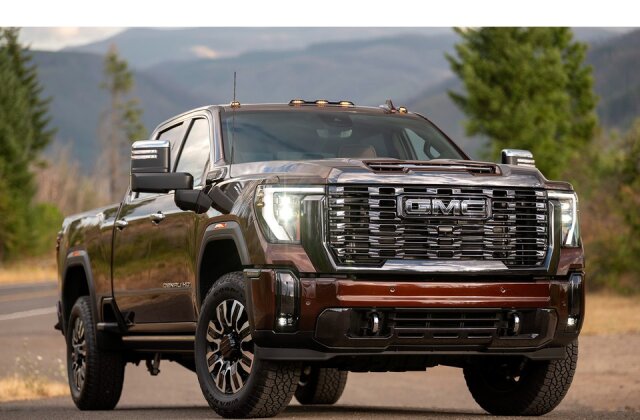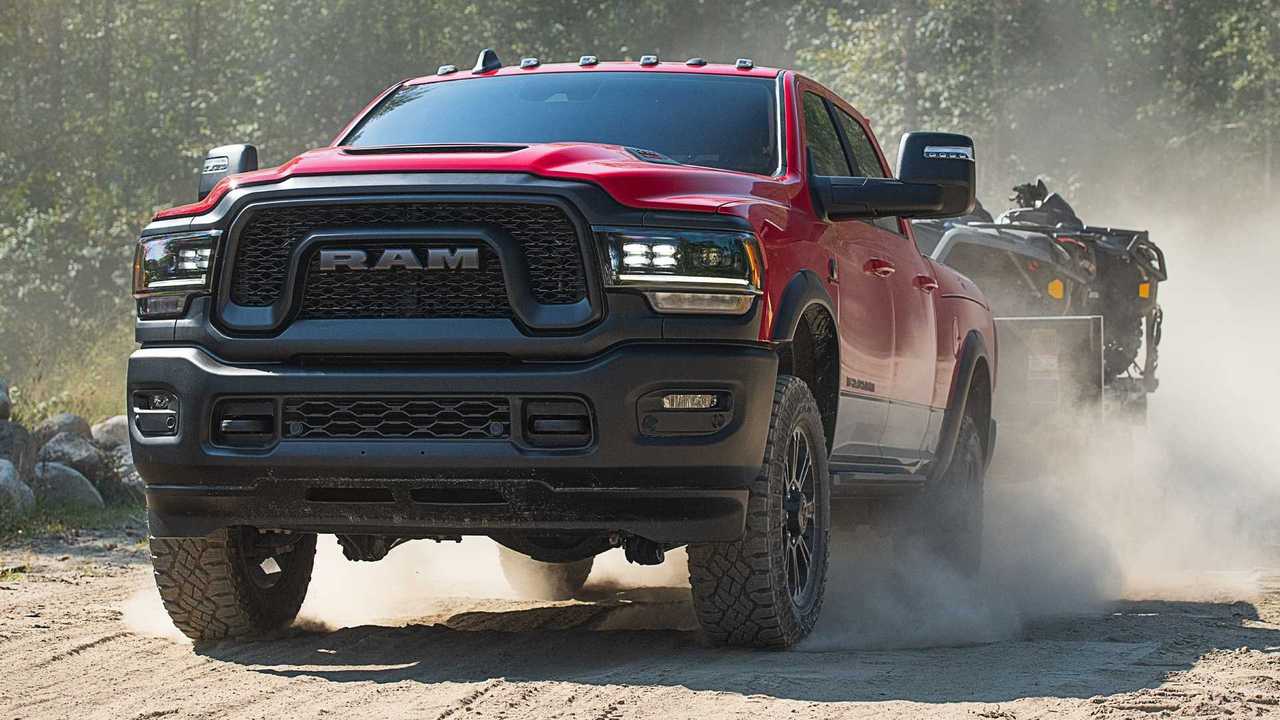How to Tune a Diesel Engine for Heavy-Duty Trucks and Achieve Amazing Performance
When it comes to heavy-duty diesel engines—like those found in the Ford F250 or RAM 2500—tuning can unlock amazing performance, whether you're towing heavy loads, off-roading, or simply looking for more power on the highway. Diesel engines are known for their durability, torque, and fuel efficiency, but with proper tuning, you can take your engine’s performance to the next level. Here’s a comprehensive guide on how to tune a diesel engine for heavy-duty trucks to achieve impressive results.
Why Tune a Diesel Engine?
Tuning your diesel engine allows you to:
- Increase power and torque, especially under heavy loads.
- Improve fuel efficiency for long-haul drives or day-to-day use.
- Enhance throttle response for smoother acceleration.
- Reduce emissions by optimizing fuel combustion.
Heavy-duty trucks are built for performance, but factory settings often leave room for improvement to meet regulatory standards and accommodate a wide variety of drivers. Tuning lets you customize your engine for your specific needs, whether that’s maximum power, fuel efficiency, or a blend of both.
1. Start with Boost and Airflow Management
Diesel engines thrive on turbochargers to force more air into the combustion chamber, allowing for more fuel to burn and thus producing more power. Tuning starts with managing the boost.
Increase Turbo Boost Pressure:
- By increasing turbo boost pressure, you can push more air into the cylinders, allowing the engine to produce more power without significantly increasing fuel consumption.
- Adjust the ECM (Engine Control Module) to increase boost levels, especially when the engine is under load. However, monitor temperatures to avoid overheating.
- Intercooler upgrades can help manage the increased air temperature caused by higher boost levels, ensuring cooler, denser air enters the engine for better combustion.
Upgrade the Air Intake and Exhaust System:
- A high-flow air intake system improves the amount of air entering the engine, allowing for more efficient combustion.
- Aftermarket exhaust systems, like turbo-back or cat-back exhausts, reduce backpressure, allowing exhaust gases to exit more freely and improving overall engine efficiency. This results in better turbo spool-up and increased horsepower.
2. Optimize Fuel Injection Timing
Fuel injection timing is one of the most important adjustments you can make to a diesel engine for performance. Adjusting when fuel is injected can greatly impact power, torque, and efficiency.
Advancing Injection Timing:
- Advance the fuel injection timing (inject fuel earlier in the compression stroke) to increase power and efficiency. This allows the fuel to burn more completely, creating more power for each stroke.
- Advancing timing is particularly beneficial under heavy load conditions like towing or off-roading, where more power is needed at lower RPMs.
- However, be cautious not to advance timing too much, as this can lead to knocking and increased combustion temperatures, which could damage the engine.
Multi-Stage Injection:
- Use multi-stage injection tuning to improve efficiency and smoothness. Modern diesel engines often have multiple injections per cycle (pilot, main, and post injection). By fine-tuning the pilot injection, you can reduce engine noise and improve smooth combustion, especially at low RPMs.
- Pilot injection helps preheat the combustion chamber and reduces the shock of combustion, which is useful for smooth driving and emissions control.
3. Adjust the Air-Fuel Ratio (AFR)
A key to achieving high performance in a diesel engine is ensuring the air-fuel ratio (AFR) is properly adjusted for each driving condition. Diesel engines naturally run lean (more air than fuel), which helps with fuel efficiency, but adjusting the AFR for different conditions can significantly impact performance.
Richen the Mixture Under Load:
- When under heavy load, slightly increasing the fuel-to-air ratio (richer mixture) can provide more power by burning more fuel. This is particularly effective when towing or during hard acceleration.
- To maintain the proper balance and avoid excessive black smoke (from unburned fuel), ensure your turbo boost is synchronized with your fuel adjustments.
Leaner Mixture for Cruising:
- For light load or highway cruising, leaning out the mixture (more air, less fuel) can improve fuel efficiency while maintaining adequate power. Diesel engines operate more efficiently when running lean under these conditions.
4. Fine-Tune Fuel Delivery for Maximum Torque
Heavy-duty trucks rely on their torque to pull heavy loads. By increasing fuel injection quantity at lower RPMs, you can unlock more torque, which is key for towing, hauling, or off-road driving.
Increase Fuel Quantity at Low RPMs:
- Increase fuel delivery at lower RPM ranges to ensure the engine produces maximum torque where it’s needed most, such as during acceleration or pulling heavy loads.
- Adjust your engine’s ECM to inject more fuel during the power stroke to boost torque without sacrificing fuel efficiency. This will give you that extra pulling power that heavy-duty trucks are known for.
5. Monitor EGT (Exhaust Gas Temperature) for Safety
One of the risks of tuning diesel engines for performance is the potential to increase Exhaust Gas Temperature (EGT) beyond safe limits. If EGT gets too high, it can cause engine damage by overheating the turbo, pistons, or other components.
EGT Monitoring:
- Install an EGT gauge to monitor exhaust gas temperatures, especially if you’ve increased fuel delivery or turbo boost pressure. Keeping an eye on this will ensure that you don’t push the engine too hard.
- Aim to keep EGT below 1,250°F (676°C) for sustained driving to protect the engine and turbocharger from heat damage.
6. Use a Custom Tune for Your Driving Needs
Every heavy-duty diesel truck and driver is different, which is why custom tuning is the best approach for maximizing performance. By using tuning software or hiring a professional tuner, you can adjust parameters like fuel injection timing, boost pressure, and AFR to match your specific needs.
For Towing:
- Increase low-end torque with more fuel delivery at lower RPMs and slightly advance the injection timing for smooth, powerful towing performance.
For Off-Roading:
- Focus on tuning for low RPM torque and throttle response. Adjust turbo boost and timing to give the engine more immediate power without lag, especially in challenging terrain.
For Highway Cruising:
- Optimize fuel efficiency by adjusting injection timing and leaning out the AFR for better fuel consumption without sacrificing power during long hauls.
Final Thoughts: Achieve Amazing Diesel Performance
Tuning a heavy-duty diesel engine is all about finding the balance between power, efficiency, and reliability. By optimizing turbo boost, fuel injection timing, and air-fuel ratios, you can significantly increase your truck’s performance, whether you’re towing heavy loads or hitting the highway. Remember, tuning for diesel engines also requires monitoring temperatures and exhaust levels to ensure long-term engine health.
Investing in a custom tune that fits your specific driving needs will unlock your engine’s full potential, giving you improved power, torque, and fuel efficiency—the hallmarks of an amazing heavy-duty truck.



